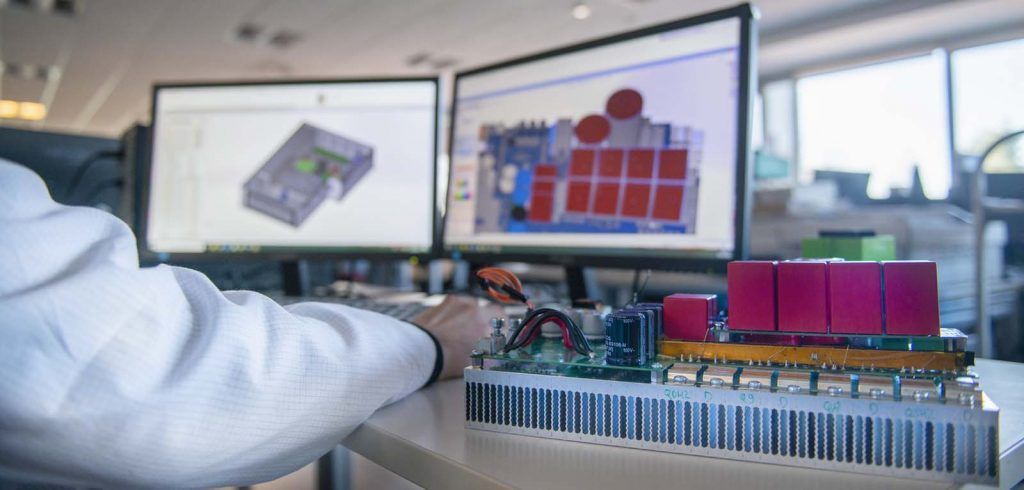
What is new product introduction process and what does new product introduction mean? NPI stands for New Product Introduction and is the process that develops an idea from an initial working prototype to a completely refined and mass-reproducible final product. New Product Introduction requires a large investment as well as time also resources and careful planning and organization goes into every phase aimed at ensuring that the final result of the work is worth the effort.
What does a New Product Introduction engineer do
The engineers working in the sector carry out the design of the product, while production planners have the task of deciding the best strategy to achieve the mass production of the product itself. Their particular task is to identify the sources of parts and develop and strategies related to the purchase of the stock required to meet production objectives. Before the final designs are completed and finalized, the designers must also determine the test phases of the new product to ensure its correct functionality.
The phases of Design For Testability, Design For Manufacturing and Design To Cost guarantee that all future testing and production operations are carried out as efficiently as possible and Elemaster is the right partner to support the industrialization of your concept in the Electronic and Mechatronic markets.
Each stage of the design process differs from the previous stage. For this reason, business analysts constantly evaluate customer needs with the aim of predicting how the new product is able to satisfy the main needs and requirements.
The marketing staff will then decide how to communicate the capabilities and quality of the new product. Finally, the sales department will calculate the earning opportunities. All these activities proceed as the final schematics, parts procurement plans, assembly instructions, testing procedures and final design refinement bring the product closer to the start of its first production run.
When do new product introductions typically fail
Even carrying out an extremely expensive project is not an undertaking without potential disadvantages. An excessive price and a too low price are two elements that often represent the main mistakes of startups who fail to understand the real potential and value that their company is able to provide with their products and the right Manufacturing partner is essential in this.
How to make new product introduction
How to make new product introduction and what do you usually do on new product introduction? During the evaluation of a new product introduction, the element that often gets too little attention than it deserves is writing an initial introduction for a product that is about to be released. Getting the product launch right is extremely important, if not essential. If mistakes are made at this stage, the chances of your product becoming successful decrease significantly.
Here are the 5 most important things to do to market a successful new product.
Define your target audience
Before launching your product on the market, you need to know why someone would buy it, and especially who would buy it.
Try to identify your target customer as precisely as possible.
In particular, you will have to define:
- Age
- Location
- Gender
- Job role
- Disposable income
- Likely pain points
- Likely hobbies
- Websites they visit
- Family life
- Social media sites they use
Determine your USP
A successful product is often characterized by a very important aspect: it is a unique and particularly attractive selling proposition. There is something that distinguishes it from the competition and that in a certain way forces consumers to choose it over a similar product.
The questions you need to ask yourself about your product versus competing products are as follows:
- It is simpler to use?
- It is better value?
Get Your Whole Team’s Buy-in
The people behind a product play a fundamental role in its market launch. In this regard, it is essential that all the people involved in the product creation and promotion project strongly believe in it. You will have to create a culture based on the product.
Can’t get the buy-in for everyone on your team? Then in this case you will have to ask yourself why. If it is just one or two people who are totally disagreeing and involved in the project, it might just be that they’re not a good fit for your company. If, on the other hand, a feeling of mistrust is particularly widespread, the question of why remains. Is there a problem with the product? Or have you simply failed to effectively articulate its benefits for your team?
Diversify your marketing strategy
When your product hits the market, you need to engage with as many viewers as you can. This means trying as much as possible to create a strategy that is able to ensure that your product is seen in as many places as possible.
That certainly means posting on Product Hunt.
You may also decide to work with an influencer who shares your target audience.
Finally, you can consider sponsoring your product at an industry event.
You will have to invest in advertising and digital marketing (Google and social networks).
Depending on the type of product sold, you may even want to take to the streets and distribute flyers or, why not, free samples.
Time your launch right
When your product is finally ready for market launch, at this point you just have to grit your teeth and ask yourself: is it better to introduce it to the market right away?
Considering that every product and service is different, the answer to this question is probably no.
Timing can sometimes make the difference between business success and failure when it comes to bringing a new product to market.
Is your product seasonal? Put it on the market when interest is at its peak.
You will also have to ask yourself: what is your budget dedicated to promotional activity? Do you have enough funds available to sufficiently support the launch and get the product off the ground?
If you have spent too much money in the development phase and are short of cash for this reason, consider raising funds before launching your product on the market. There is little point in launching if you lack the budget to properly promote your product.
New Product Introduction – NPI IN ELECTRONICS
The New Product Introduction (NPI) activity is an essential part of Elemaster Group portfolio of services. The objective is to carry out a reliable and repeatable assembly and testing process aimed at placing the products on the market in rapid times, while meeting the quality, technical and competitive requirements in terms of cost.
A constant communication with B2B Customers allows us to meet their requests in the best possible way and in the shortest possible time and thus to reach their ultimate goal with their final B2C customers worldwide.
The process includes the analysis of product specifications through the use of design verification methods such as Zero Design Defect (ZDD), Manufacturing Rules Checks (MRC) and Reliability Stress Screening (RSS) in order to eliminate defects in electronic products in the initial stage and validating the assembly and testing process.
Our services
- Purchasing campaign through fast delivery channels
- SMT/THT assembly through fully dedicated prototyping machines and teams (dedicated Business Unit)
- NPI report
- FAI report
- Zero Design Defect (ZDD)
- Manufacturing Rules Checks (MRC)
- Reliability Stress Screening (RSS)
